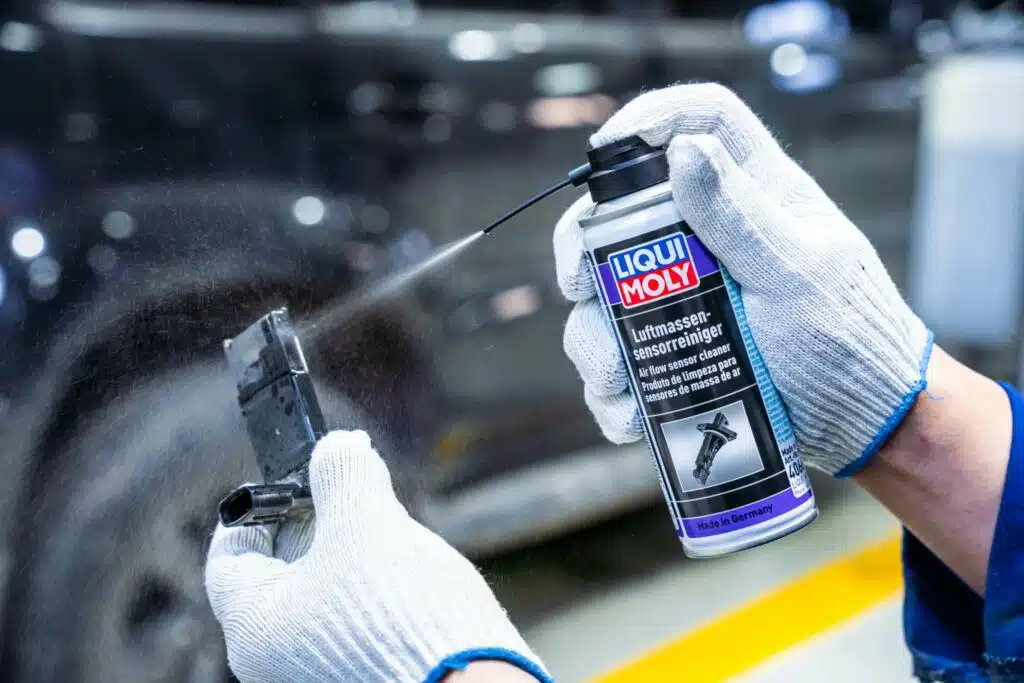What is an airflow sensor and what does it do? An airflow sensor, also known as a mass airflow (MAF) sensor, is a device that measures the amount and temperature of air entering the engine. The sensor is typically located in the air intake system, near the throttle body or the air filter.
The airflow sensor works by measuring the amount of air that is flowing into the engine, and it sends this information to the engine control module (ECM). The ECM uses this data to calculate the correct amount of fuel to inject into the engine, in order to maintain the correct air-fuel ratio. This is important for the efficient operation of the engine, as well as for emissions control.
Airflow sensors can become dirty and clogged over time, which can cause issues such as poor engine performance, increased fuel consumption, and difficulty starting the engine. If the sensor is malfunctioning, it can also trigger a check engine light. Cleaning or replacing the airflow sensor as needed can help to ensure the proper operation of the engine.
When should i clean the mass airflow sensor?
The mass airflow (MAF) sensor should be cleaned as part of regular vehicle maintenance. It is typically recommended to clean the MAF sensor every 30,000 miles or as needed if there are symptoms of a dirty MAF sensor such as poor engine performance, increased fuel consumption, and difficulty starting the engine. Additionally, if the check engine light comes on and a diagnostic scan shows a problem with the MAF sensor, it’s a good idea to clean it. It’s also a good idea to check your vehicle’s owner manual for manufacturer recommendations. It is worth noting that before cleaning the MAF sensor, you should check the air filter, if it’s dirty or clogged, it should be cleaned or replaced, as a dirty air filter can cause issues with the MAF sensor. Cleaning the MAF sensor is a simple and inexpensive way to keep your vehicle running smoothly and efficiently.

Why should I clean the mass airflow sensor?
Cleaning the mass airflow (MAF) sensor is important because over time dirt, dust, and other debris can accumulate on the sensor, causing it to become clogged. This can lead to a variety of issues with the vehicle’s performance, such as:
- Poor engine performance: A dirty MAF sensor can cause the engine to run lean, which can result in poor acceleration, hesitation, and rough idle.
- Increased fuel consumption: When the MAF sensor is dirty, the engine may not be getting the correct amount of fuel, which can result in increased fuel consumption.
- Difficulty starting the engine: A dirty MAF sensor can cause the engine to flood or not start at all.
- Check engine light: A dirty MAF sensor can cause the engine’s computer to send a signal to turn on the check engine light.
Cleaning the MAF sensor is a simple and inexpensive way to keep your vehicle running smoothly and efficiently. It helps the engine control module to calculate the correct amount of fuel to inject into the engine, in order to maintain the correct air-fuel ratio and avoid the issues mentioned above. It’s also a good idea to check your vehicle’s owner manual for manufacturer recommendations, as some sensors require special cleaning methods or solutions.
How do I clean the mass airflow sensor?
Here is a general guide on how to clean the mass airflow (MAF) sensor:
- Turn off the engine and let it cool down.
- Locate the MAF sensor, which is typically located in the air intake system, near the throttle body or the air filter.
- Carefully remove the sensor from the air intake system, being careful not to damage the sensor or its wiring.
- Use a specialized MAF sensor cleaner or electronic contact cleaner to clean the sensor. Make sure to follow the instructions on the cleaner can and always wear safety gear when using any chemicals.
- Reinstall the sensor and the air intake system, and start the engine to check for any issues or strange noises.
- Make sure to check the air filter and clean or replace it if it’s dirty.
It’s worth noting that while this cleaning method is relatively simple, if you’re not comfortable with working on the car or you don’t have the right tools, it may be best to take your vehicle to a professional mechanic. Also, it’s important to check the owner’s manual of your vehicle, as some manufacturers have different recommendations or specific cleaning procedures.
